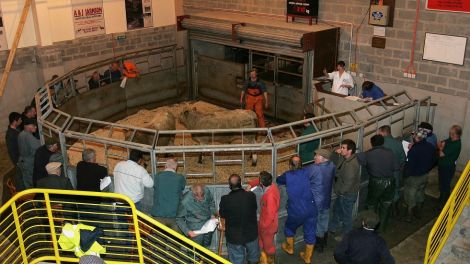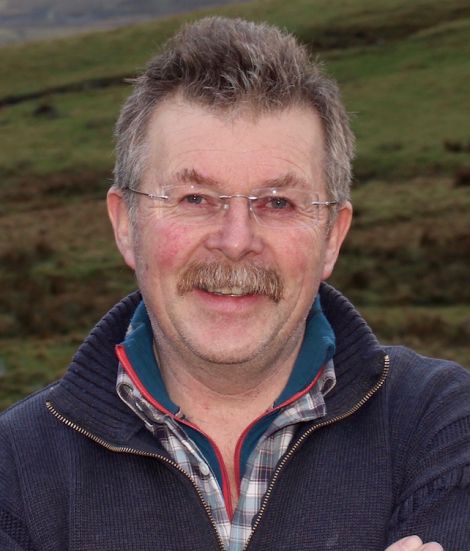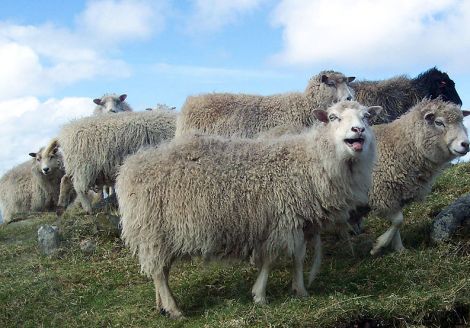News / Mart threatened by Holyrood devaluing land
THE FUTURE of Shetland’s livestock mart is in doubt after the Scottish government started reclassifying agricultural land in the isles, it has been claimed.
Shetland Livestock Marketing Group (SLMG) chairman Ronnie Eunson says the government has hit crofters and farmers with sudden changes that devalue their land, reducing subsidy levels by up to 90 per cent.
The changes come as the government is already under fire for delaying payments under the new Common Agricultural Policy (CAP), adding to existing financial pressures caused by poor weather over the past year.
However the unexpected downgrading of good agricultural land as rough grazing, cutting subsidy levels from around £200 to just £20 per hectare, poses the greatest threat, according to Eunson.
He believes the move could further reduce the amount of livestock held in Shetland, in turn forcing the Shetland Mart to close so animals have to be shipped south for sale on the mainland.
He also accused the government of making up rules as they go along and performing a U turn after agreeing land classifications last year.
“At the moment we don’t know how much money we’re getting, when we’re getting it, or what the consequences will be for Shetland agriculture,” Eunson said.
“Many people are having a dispute about the reassessment of land type.
“A lot of people got letters saying that various areas had been reclassified to a rough grazing.
“This has come as a huge surprise and we see it as an attempt to reduce the payments that are coming into Shetland as a whole.
“SLMG is very concerned that there may be subsequent cuts in livestock numbers in the islands, and since the mart operates on the basis of commission on livestock throughput, then my worry is that the mart’s viability will be compromised.”
Become a member of Shetland News
Eunson said the mart, which was saved from closure by Shetland Islands Council in 2009, ran a “very tight” surplus of £6,000 last year, despite handling livestock worth £2 million.
“It will be very ironic if the inconsistency and lack of structure to the approach of the basic payment scheme results in drops in livestock numbers, which means the mart has to close. It’s very much a possibility,” he said.
A Scottish government spokeswoman defended the changes, saying they had been “strongly supported” by the farming industry.
“This change is aimed at supporting genuine active farming activity and our modelling indicates it will lead to an overall increase in CAP funding for the crofting counties, including Shetland, over this CAP period,” she said.
She added that the government informed every farmer and crofter last year how their land had been “allocated into payment regions using long standing definitions”.
They were also offered the opportunity to have the classification reviewed if they could provide evidence to support their claim.
However Eunson says that last year he was assured his land would be considered of higher value, and the letter informing him of the downgrading to rough grazing came as a complete surprise.
The Uradale farmer said he has started appealing his land classification, and was already forking out for people to take soil samples.
Meanwhile he joins a host of other farmers and crofters who are still waiting for the first of their two payments under the new Basic Payment Scheme set up last year to replace the Single Farm Payment, with a new £180 million computer system.
The National Farmers Union Scotland (NFUS) has called for the government to issue a new payment timetable after they missed their deadline.
Shetland NFUS president Jim Nicolson said the delays were causing “significant concern”, especially as January is traditionally a difficult time of year when producers have to buy in extra feed.
“Normally at this time of year, the single farm payment would have been in the bank account, and that was a great help,” he said.
Shetland MSP Tavish Scott said it looked certain the local industry would lose money money under the new CAP “despite the Scottish government saying the opposite”.
“Crofters need certainty especially with feed bills, tax returns and other expenses all of which should be covered by these CAP payments. The agriculture minister must get a grip of this situation,” he said.
But rural affairs secretary Richard Lochhead insisted the government was working “flat out” to get payments to farmers, blaming “very difficult and complex CAP reforms” for the delays.
“As I explained to parliament, more than 3,500 farmers and crofters received a first instalment of 75 per cent of basic payments and 90 per cent of greening in December.
“In line with the timetable we have set out, there will be further payments from January to March and we are continuing to work flat out to maximise the number of payments and level of payments.
“Any individuals who are experiencing difficulties should contact their local area office or the new RPID customer helpline that launched in December.”
Become a member of Shetland News
Shetland News is asking its readers to consider paying for membership to get additional perks:
- Removal of third-party ads;
- Bookmark posts to read later;
- Exclusive curated weekly newsletter;
- Hide membership messages;
- Comments open for discussion.
If you appreciate what we do and feel strongly about impartial local journalism, then please become a member of Shetland News by either making a single payment, or setting up a monthly, quarterly or yearly subscription.






























































